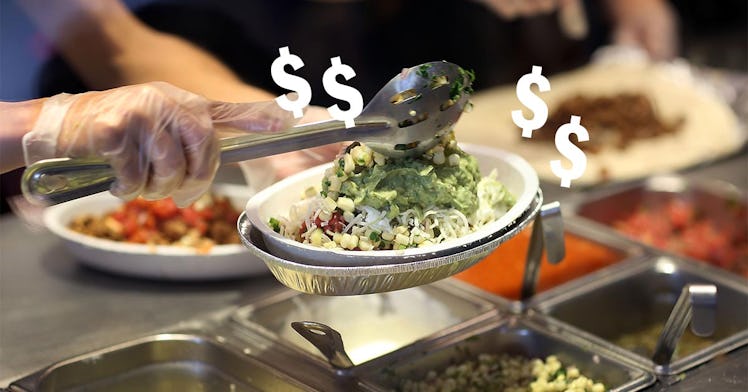What the Chipotle Price Hike Is Really About (And Why it Matters for Families)
Chipotle announced they were hiking prices after raising the wages of their employees. But the story isn't so simple.

It all started with a casual remark from a Chipotle executive at a global conference. The restaurant chain’s CEO, Brian Niccol, mentioned on June 8 that the company would need to raise prices by about four percent in order to “invest in employees” shortly after they announced they would offer larger wages and even paths to six-figure salaries for some employees at their restaurants.
Nearly instantly, business journalists around the world started publishing headlines that all said essentially the same thing: higher pay for workers is raising the cost of your burrito.
CNBC declared, “Chipotle hikes prices to cover the cost of raising wages.” USA Today’s headline: “Chipotle raises prices after worker wage increase.”
This is, in essence, true, but the cause and effect relation implied by many of these headlines is more than a little inaccurate.
While Chipotle has promised to pay workers more and hire 20,000 more employees, it can afford to do so without hurting the existing bottom line.
According to the company’s last quarterly report, labor costs went up 10% when you compare January-March 2021 to the same period in 2020. However, total revenue increased by 23% – including a whopping 161% increase in revenue from delivery services. Chipotle’s net income in these three months was $127 million.
And CEO Brian Niccol also took home $38 million in 2020, which is 2,898 times more than the annual salary of the median Chipotle worker. So while customers can easily take that four percent cost increase on the chin (amounting to nickels and dimes, really) there are other places to look when it comes to the drawbacks of raising wages to liveable ones.
As Jacob Silverman in The New Republic points out, Chipotle “has ample resources to pay workers more, preserve prices as they are, and still remain immensely profitable. Perhaps the costs would have to be ‘passed on’ to someone else, but it needn’t be consumers on the receiving end.”
At the end of the day, paying 30 or 40 cents more for a burrito bowl is not a huge deal. But this debate still matters a lot for families.
Especially at a time when the labor market is being subsumed by so-called “labor shortages” that look a lot like people holding out for better-paying jobs. 25 states have cut emergency unemployment benefits that were meant to support people struggling in the pandemic economy. Those who are in favor of cutting the emergency benefits say that generous unemployment benefits make it harder for businesses to compete for, and hire, workers — unless, of course, those businesses raise wages.
Some businesses, like Under Armour and Starbucks, have raised wages, and many have reported thousands of applications coming in when their wages are more liveable and less starvation-level. Plus, these wages often ripple out to other big businesses as other companies will likely raise their wages as well to compete, studies have shown.
But when we fall for the demonization of raising wages, we shoot ourselves in the foot when it comes to fighting for fair wages for working families.
When companies say they can’t raise wages without raising prices, those who would rather the federal minimum wage stay at poverty levels can point to the fact that every choice will harm consumers in some way and price increases will harm families more than not having liveable wages.
Workers in the gig economy and the service sector — many of whom are parents, and who are, on average, well into adulthood, need to put food on their family’s table too.
Raising the wages is a simple choice, and it’s one that in many cases, doesn’t need to have a “drawback.” But even if it does happen, as is the case with Chipotle, 30 or 40 cents seems like something we can all take on the chin.